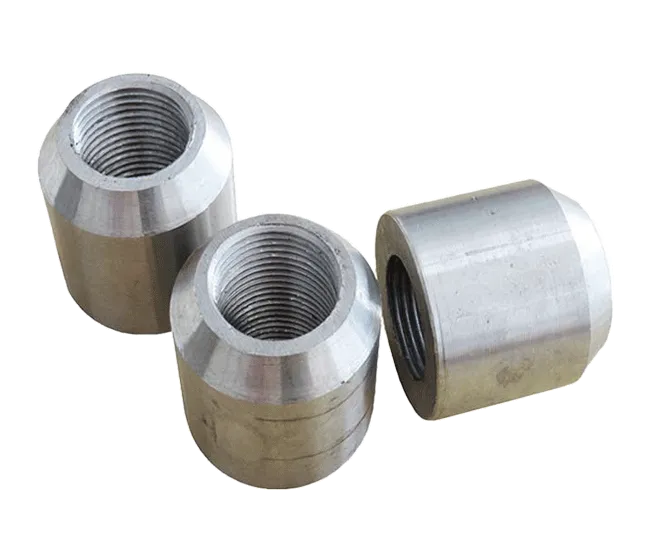Products Description
In terms of material and craftsmanship, the main body of the sleeve is made of low-alloy high-strength structural steel (such as Q355), which has both good welding performance and mechanical strength. The welded end is pre-treated (such as derusting and groove processing) to ensure welding quality, and the threaded end has a precision of grade 6H, which closely matches the straight thread of the steel bar. The construction process involves two steps: first, connect the welded end of the sleeve to the end of one steel bar by arc welding or flash butt welding. After welding, flaw detection is required to ensure that the weld has no pores or cracks, and the penetration depth meets the standard (usually not less than 0.8 times the diameter of the steel bar); second, after the weld cools to room temperature, screw another steel bar with processed straight threads into the threaded end of the sleeve, and apply the specified pre-tightening torque with a torque wrench (e.g., 460N·m for 32mm diameter steel bars) to complete the overall connection.
The significant advantages of this connection method are: first, dual force guarantee — the welded end provides shear bearing capacity, and the threaded end transmits axial tension, suitable for structures bearing composite loads (such as near bridge supports, tower crane foundation embedded parts connections); second, strong integrity — welded fixation reduces the risk of joint loosening, especially suitable for vibrating load environments (such as industrial plants, power station unit foundations); third, adaptation to complex working conditions — it can solve scenarios where steel bar spacing is narrow and traditional full-thread connection cannot be adopted, and is compatible with steel bars of different diameters (needs to be matched with reducing design).
The welded type straight thread sleeve must comply with both Code for Welding and Acceptance of Steel Bars (JGJ 18-2012) and Technical Specification for Mechanical Connection of Steel Bars (JGJ 107-2016). It is widely used in fields with strict requirements on connection reliability, such as heavy steel structures, embedded parts of water conservancy project gates, and pile foundations of marine engineering, serving as an important solution for rigid connection of steel bars under special working conditions.



